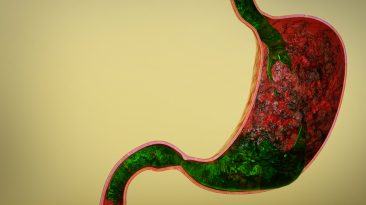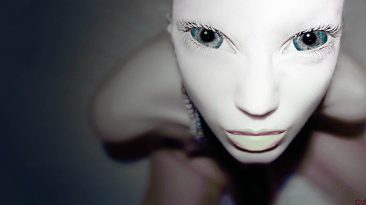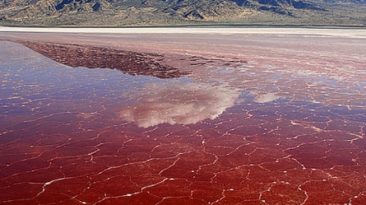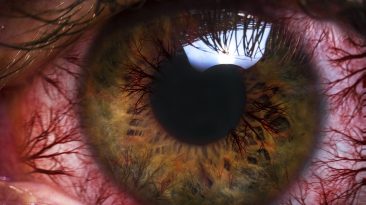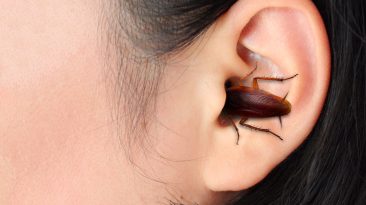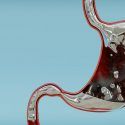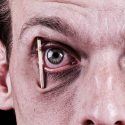You’ve seen it growing on your fruit, eating your leftovers, and maybe even hiding in your basement. This is mold.
It smells bad, it’s creepy-looking, and even if you don’t know much about it, you probably know enough to keep it as far away from your mouth as possible. But what would happen if you ate some without realizing it?
What would it do to your body? Would you have to go to the hospital? Is there any situation where it could actually taste good?
There are up to 300,000 different types of mold, and they could affect you in very different ways. Some could ruin your day by causing nausea or diarrhea. Some could be used to make expensive cheeses, and others could nearly kill you!
So how do you know which kind of mold you’re dealing with? And is it ever okay to just eat around the mold on your food?
Mold is the microscopic fungi you can find living on plants, animals, and even in buildings. Molds form branches that are like thin threads called hyphae. These can burrow into food, something you might miss since they can be difficult to see.
If you do notice mold growing on your food, your first question will probably be, “should I throw this away?” So we’ve put together a little guide to help you figure it out.
If you find mold on soft foods like yogurts, jams, peaches, or tomatoes, you should throw it out right away. But if you find mold on harder foods like cheese, carrots, or hard salami, it’s ok to cut the mold out and eat the rest of your food.
Harder, denser foods are more difficult for mold to penetrate, meaning it can’t spread inwards as quickly as it can in softer foods.
But let’s imagine that you didn’t have this handy guide, and you ate some moldy food. What would happen to you?
Well, the biggest problem wouldn’t be the mold itself. It’s the other things that come along with the mold that could really hurt you.
First off, there’s the invisible bacteria that can accompany the mold. If you eat that bacteria you would experience stomach pain, vomiting, and several urgent trips to the washroom.
But that would be nothing compared to the damage that would come from eating something called mycotoxins. Mycotoxins are poisonous substances that are produced by certain strains of mold; they can be found in a variety of foods, and can survive almost all kinds of food processing.
There are many kinds of mycotoxins, about 500 to be specific. Perhaps the most dangerous variety is known as aflatoxin.
Aflatoxin grows on corn and peanuts. Too much aflotoxin can cause liver damage, cancer, DNA damage, and immune system deficiency.
But not all mold is harmful. In fact, sometimes people eat mold on purpose. Take blue cheese, for example; it’s produced using the non-toxic blue molds penicillium roqueforti and penicillium glaucum.
These molds have anti-bacterial properties that enable them to suppress pathogens. They also break down proteins, which is why blue cheese is so creamy and has a sharp flavor.
Just like most things on our planet, there’s more to mold than meets the eye. Sure it can make you sick, but it’s also the key to one of the most powerful antibiotics of all time: Penicillin.
Subscribe to What-If on YouTube or follow the show on Facebook Watch.
Sources
- “Molds On Food: Are They Dangerous?”. 2019. fsis.usda.gov. Accessed July 28 2019.
- “4 Moldy Foods You Can Eat (Plus Which Foods To Toss)”. Wright, Brierley, 2019. Eatingwell. Accessed July 28 2019.
- “Do the Same Types of Mold Grow on All Types of Bread?”. Hodge, Tracy, 2019. Hunker. Accessed July 28 2019.
- “CDC – Mold – General Information – Basic Facts”. 2019. cdc.gov. Accessed July 28 2019.
- “Mycotoxins”. 2018. who.int. Accessed July 28 2019.
- “Mycotoxins: 1. What Are Mycotoxins?”. 2019. greenfacts.org. Accessed July 28 2019.
- “Molds On Food: Are They Dangerous?”. 2019. fsis.usda.gov. Accessed July 28 2019.
- “Why Is It Safe To Eat The Mould In Blue Cheese?”. 2014. The Independent. Accessed July 28 2019.
- “Never Eat The ‘Clean’ Part Of Moldy Bread”. Kim, Gene, 2019. Business Insider. Accessed July 28 2019.
- “Apparently, Cutting The Mold Off Food Doesn’t Always Work”. 2019. Women’s Health. Accessed July 28 2019.












